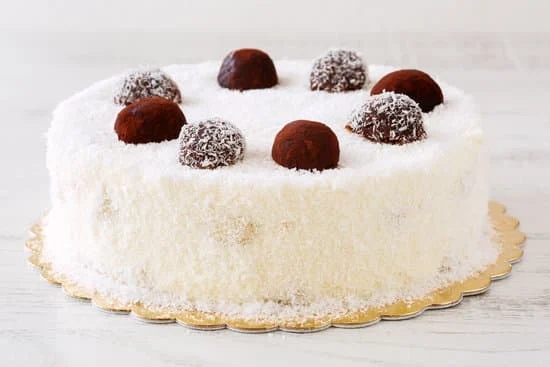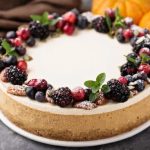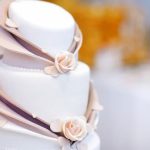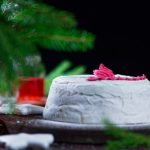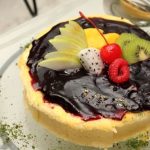Royal icing is a versatile and essential staple in the world of cake decorating, loved for its smooth finish and ability to hold intricate designs. In this article, we will guide you on how to make royal icing for cake decorating, providing you with all the necessary information and tips to create stunning edible masterpieces.
Royal icing is a mixture of powdered sugar, egg whites, and water that dries to a hard, glossy finish, making it ideal for creating delicate decorations on cakes, cookies, cupcakes, and more. Its versatility lies in its ability to be piped into different shapes and designs while holding its form once set – perfect for intricate detailing or elegant borders.
Whether you’re a baking enthusiast looking to elevate your cake decorating skills or a professional pastry chef wanting to master the art of royal icing techniques, understanding the basics of royal icing is crucial. From mastering the consistency and texture to learning how to troubleshoot common issues, this introductory section sets the stage for an informative journey into the world of royal icing crafting.
Ingredients Needed
Royal icing is a versatile and essential element in the world of cake decorating. It is not only used to create intricate designs and beautiful decorations on cakes, cookies, and other baked goods, but it also serves as a strong adhesive for assembling gingerbread houses and other edible crafts. Knowing how to make royal icing for cake decorating opens up a world of creative possibilities for bakers and decorators.
To make royal icing, you will need just a few simple ingredients that you may already have in your kitchen. The main components include egg whites or meringue powder, confectioners’ sugar (also known as powdered sugar), and water. These basic ingredients form the foundation of royal icing and provide the smooth texture needed for intricate designs. In addition to these core ingredients, some recipes may call for cream of tartar or lemon juice to help stabilize the icing.
For those who prefer not to use raw egg whites in their royal icing recipe due to health concerns or dietary restrictions, meringue powder is a great substitute. Meringue powder is made from dried egg whites and can be reconstituted with water to achieve the same consistency as fresh egg whites. This makes it a safe alternative while still providing the necessary structure for successful cake decorating projects.
| Ingredient | Common Substitute |
|---|---|
| Egg Whites | Meringue Powder |
| Confectioners’ Sugar | Granulated Sugar Ground into Powder |
| Cream of Tartar | Lemon Juice or Vinegar |
By understanding the different ingredients needed to make royal icing and having knowledge of suitable substitutes, you can confidently embark on your cake decorating journey. Experimenting with various combinations can also lead to unique flavors and textures in your creations. The next step after gathering your ingredients is to ensure you have the proper tools and equipment ready before diving into making this versatile icing.
Tools and Equipment
Royal icing is an essential component in cake decorating, as it not only serves as a flavorful addition to your baked goods but also acts as a versatile medium for intricate designs. To make royal icing successfully, you will need a variety of tools and equipment to ensure the desired consistency and flawless application on your cakes, cookies, and other desserts.
Mixing Bowls and Electric Mixer
Begin by gathering mixing bowls in various sizes to accommodate different batch sizes of royal icing. An electric mixer is also crucial for efficiently whipping up the icing to achieve the desired fluffy texture. Ensure that the bowls and mixer attachments are clean and free from any grease residue to prevent affecting the consistency of the icing.
Piping Bags and Tips
Invest in quality piping bags to hold your royal icing while decorating. Coupled with an assortment of piping tips in different shapes and sizes, they allow for endless creative possibilities in designing your cakes or cookies. Make sure to have a variety of round, star, leaf, and petal tips on hand for diverse decorating techniques.
Offset Spatula and Bench Scraper
An offset spatula is indispensable for smoothing royal icing onto cakes or creating perfectly flat surfaces on cookies. A bench scraper helps in achieving sharp edges and clean lines when working with royal icing. These tools are essential for professional-looking decorations that elevate the overall presentation of your baked goods.
By having these tools and equipment at your disposal when making royal icing for cake decorating, you can streamline the process and create stunning designs with ease. Remember to keep everything organized and within reach so that you can focus on perfecting your piping skills and bringing your creative visions to life through beautifully decorated treats.
Step-by-Step Instructions
Royal icing is a versatile and essential component in the world of cake decorating. Whether you are a beginner or an experienced baker, knowing how to make royal icing for cake decorating can elevate your creations to the next level. This smooth, glossy icing dries hard, making it perfect for creating intricate designs, details, and decorations on cakes, cookies, and other baked goods.
Gather Your Ingredients
To make royal icing from scratch, you will need just a few simple ingredients: egg whites or meringue powder, powdered sugar (also known as confectioners’ sugar), and water. If you prefer not to use raw egg whites in your royal icing, meringue powder is a great alternative that can be found in most baking supply stores. Additionally, you may want to have some cream of tartar on hand to stabilize the icing and help prevent it from becoming too runny.
Mixing the Ingredients
Start by whipping the egg whites or meringue powder with water until frothy. Gradually add in the powdered sugar while continuing to mix until the icing becomes thick and glossy. The key to achieving the right consistency is slowly adding more powdered sugar until you reach your desired thickness. Be mindful not to overmix as this can introduce air bubbles into the icing, affecting its smooth finish when used for decorations.
Techniques for Working With Royal Icing
Once you have made your royal icing, store it in an airtight container or cover it with plastic wrap to prevent it from drying out. When working with royal icing for cake decorating, make sure to use piping bags fitted with small round tips for fine lines and intricate designs.
Experiment with different piping techniques such as outlining, flooding, and writing to create various effects on your cakes or cookies. With practice and patience, you can master the art of using royal icing to beautifully decorate your baked creations.
Consistency and Texture
Achieving the right consistency and texture of royal icing is crucial when it comes to cake decorating. The consistency of your icing will dictate how well it adheres to the surface of the cake or cookies, as well as how easy it is to work with for different decorating techniques. Royal icing that is too thick may be difficult to pipe intricate details, while icing that is too thin can create messy designs or not hold its shape properly.
To achieve the perfect consistency for your royal icing, start by following the recipe and measurements accurately. If your icing turns out too thick, you can gradually add small amounts of water to thin it out. On the other hand, if your icing is too thin, you can add more confectioners’ sugar to thicken it up. It’s important to make small adjustments at a time to avoid overcompensating and ruining the entire batch.
When working with royal icing for different cake decorating techniques such as flooding, outlining, or piping intricate designs, it’s important to adjust the consistency accordingly. For flooding, you’ll want a thinner consistency that easily spreads across the surface without forming bumps or ridges.
On the other hand, for piping details and intricate designs, a thicker consistency that holds its shape without spreading is ideal. Experimenting with different consistencies will help you find what works best for your specific decorating needs and preferences when using royal icing.
Coloring and Flavoring
Royal icing is a versatile and essential ingredient in cake decorating, known for its smooth finish and ability to create intricate designs. When it comes to adding color and flavor to royal icing, there are several tips and techniques that can help you achieve the perfect look for your cake decorating theme or personal preferences.
To start off, here are some simple tips on coloring royal icing:
- Use gel or paste food coloring: Gel or paste food coloring works best with royal icing as it does not alter the consistency of the icing.
- Add colors gradually: Start with a small amount of coloring and gradually add more until you achieve the desired shade.
- Use a toothpick: To control the intensity of the color, use a toothpick to add small amounts of coloring at a time.
Flavoring royal icing can also enhance the overall taste of your decorated treats. Here are some flavoring tips:
- Use clear extracts: Clear extracts such as vanilla, almond, or lemon work well in royal icing without altering its white color.
- Avoid using oil-based extracts: Oil-based extracts can break down royal icing consistency, so stick to water-based flavorings.
- Experiment with different flavors: Don’t be afraid to try different flavor combinations to find your signature taste for royal icing.
By following these simple tips on coloring and flavoring royal icing, you can take your cake decorating skills to the next level and create stunning edible works of art that not only look beautiful but also taste delicious. Remember to experiment with different colors and flavors to find what works best for your unique creations.
Piping Techniques
Royal icing is a versatile and essential component in the world of cake decorating. Its smooth texture, ability to harden when dried, and ease of use make it a popular choice for creating intricate designs on cakes, cookies, and other baked goods. In this section, we will explore different piping techniques that you can utilize with royal icing to elevate your creations.
One of the most common piping techniques used with royal icing is outlining. This involves using a stiff consistency royal icing to trace the outline of your design on the surface of the cake or cookie. Once the outline has dried, you can then flood or fill in the area with a slightly thinner royal icing to create a smooth and seamless finish. Outlining is perfect for creating borders, lettering, or defining shapes on your baked goods.
Another popular piping technique is flooding. This method entails using a slightly runnier royal icing to fill in larger areas within the outlined shape. By gently spreading the flooding consistency icing within the borders created by outlining, you can achieve a flat and polished look. Flooding is ideal for covering entire cookies with vibrant colors or creating intricate designs on cakes with multiple shades.
In addition to outlining and flooding, there are various other piping techniques that you can experiment with when working with royal icing for cake decorating. These include drop strings, lacework, brush embroidery, and rosettes, among many others. Each technique offers its unique aesthetic appeal and allows for endless creativity when it comes to customizing your baked creations.
| Piping Technique | Description |
|---|---|
| Outlining | Using stiff consistency royal icing to trace outlines of designs. |
| Flooding | Using runnier royal icing to fill in outlined shapes for a smooth finish. |
| Drop Strings | Creating delicate strings of icing by letting it drop from a height onto baked goods. |
Troubleshooting
When it comes to working with royal icing for cake decorating, there are some common issues that may arise. Whether you’re a beginner or experienced baker, troubleshooting these problems can help you achieve the perfect finish on your baked creations. One common issue is air bubbles forming in the royal icing when piping or flooding designs on your cakes or cookies.
This can often lead to uneven surfaces and blemishes in your decoration. Here are some tips on how to fix air bubbles in royal icing:
- Before starting, make sure to stir your royal icing gently to avoid incorporating too many air bubbles in the first place.
- If air bubbles do form while piping, tap the piping bag lightly on your work surface to release any trapped air inside.
- You can also use a toothpick or small needle to carefully pop any visible air bubbles on the surface of the icing before it sets.
Another common issue when working with royal icing is achieving the right flow consistency for different decorating techniques. Royal icing that is too thick may be difficult to pipe intricate designs, while icing that is too thin may spread uncontrollably and lose its shape. Here’s how you can troubleshoot flow consistency issues with royal icing:
- If your royal icing is too thick, gradually add a few drops of water at a time and mix well until you reach your desired consistency. Be cautious not to add too much water too quickly.
- Conversely, if your royal icing is too thin, you can thicken it by adding more sifted powdered sugar and mixing until smooth. Allow the icing to rest for a few minutes before adjusting further as needed.
- For both cases, test the consistency by piping a small amount of icing onto parchment paper or a spare cookie until you achieve the desired flow for your decorating needs.
By following these troubleshooting tips and adjustments, you’ll be able to work confidently with royal icing for all your cake decorating projects without encountering common issues like air bubbles or inconsistent flow consistency. Practice makes perfect, so don’t be afraid to experiment and adjust as needed until you find what works best for your specific design goals.
Storage and Shelf Life
Royal icing is a versatile and essential component in the world of cake decorating. Learning how to make royal icing for cake decorating opens up a world of creative possibilities, allowing you to create intricate designs and stunning decorations on your baked goods. Understanding the process of making this simple yet effective icing can elevate your cakes, cookies, and other treats to professional levels.
When it comes to storing royal icing, proper handling is crucial to ensure its longevity and quality. To extend the shelf life of royal icing, it is important to store it in an airtight container at room temperature away from direct sunlight and humidity. If your royal icing becomes too stiff after storage, you can easily revive it by adding a few drops of water at a time and mixing until you achieve the desired consistency once again.
In conclusion, mastering the art of making royal icing opens up a world of creative possibilities for your cake decorating endeavors. By following the right techniques for storing and reviving royal icing, you can ensure that your creations are always at their best. So don’t be afraid to experiment with different colors, flavors, and piping techniques to take your cake decorating skills to the next level with this versatile frosting.
Frequently Asked Questions
How to Make Royal Icing Decorations for Cake?
Making royal icing decorations for cakes involves preparing a stiff batch of royal icing, piping it onto a baking sheet in various shapes, allowing it to dry completely, and then carefully transferring the hardened decorations onto the cake using additional royal icing as “glue”.
What Three Ingredients Is Royal Icing Made Of?
Royal icing is typically made from three simple ingredients: confectioners’ sugar, meringue powder (or egg whites), and water. These ingredients are combined and whipped together to achieve the desired consistency for decorating cakes and cookies.
What Is the Difference Between Royal Icing and Decorating Icing?
The main difference between royal icing and decorating icing lies in their consistencies and uses. Royal icing is stiffer and dries hard, making it ideal for intricate designs, outlines, or 3D decorations that need to hold their shape.
On the other hand, decorating icing is softer and more pliable, often used for frosting cakes or creating smooth finishes on cookies or cupcakes with a different texture than royal icing.

Welcome to our cake decorating blog! My name is Destiny Flores, and I am the proud owner of a cake decorating business named Cake Karma. Our mission is to provide delicious, beautiful cakes for all occasions. We specialize in creating custom cakes that are tailored specifically to each customer’s individual needs and tastes.

